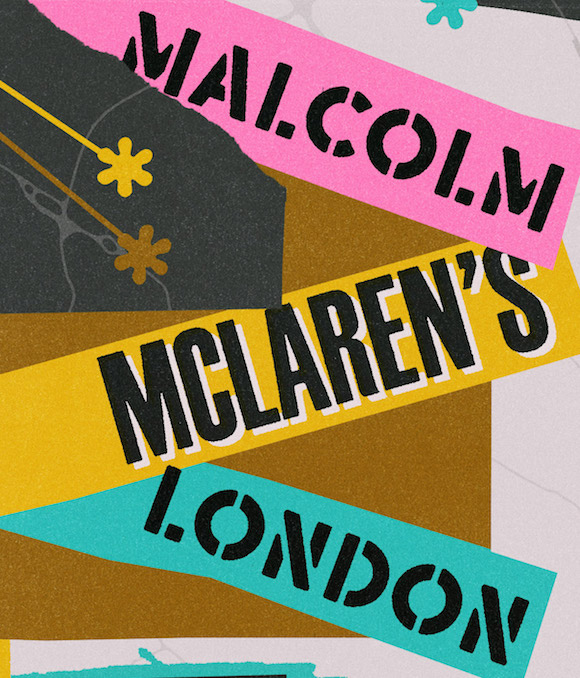

++ McLaren outside the empty Centre Point, spring 1979. Photo: Barry Plummer ++
Rare and exclusive images will be on display during the forthcoming event about the late Malcolm McLaren’s London life at Fora Soho on June 9.



++ McLaren outside the empty Centre Point, spring 1979. Photo: Barry Plummer ++
Rare and exclusive images will be on display during the forthcoming event about the late Malcolm McLaren’s London life at Fora Soho on June 9.

//Voodoo and Magic Practices, Jean Kerboull, Barrie and Jenkins, 1978. Translated from the French by John Shaw//
This is the book which inspired the late Malcolm McLaren to unite the design ideas he developed with Vivienne Westwood for their Autumn/Winter 1983 fashion collection Witches.
At the time McLaren was completing his album Duck Rock, which was conceived as an ethnological travelogue and modelled on the LP series Dances Of the World’s Peoples released on the ethnographic Folkways label; in fact, Duck Rock was originally titled Folk Dances Of The World and the incorporation of an illustrated insert containing track-by-track explanations was taken from the one which appeared in the 1958 albums.
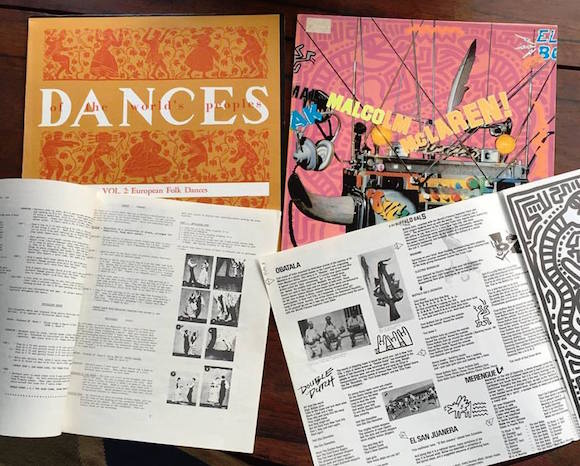
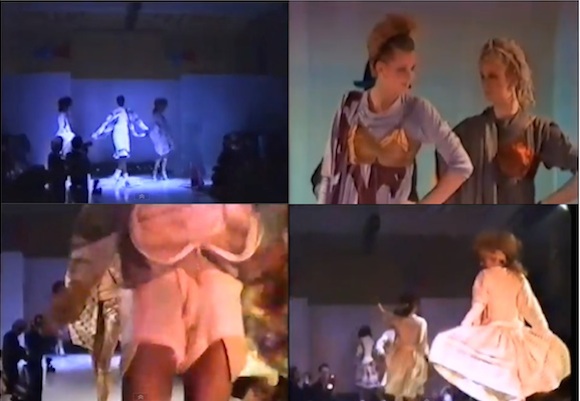
//Stills from Savages and Nostalgia Of Mud McLaren/Westwood catwalk collections, staged October 1981 and March 1982 respectively. Courtesy Malcolm McLaren Estate//
The cream of British fashion journalism – Dean Mayo Davies, Ben Reardon and Lou Stoppard – will be discussing the indomitable body of design work produced by Malcolm McLaren and Vivienne Westwood at tomorrow’s event Be Reasonable Demand The Impossible.
There has been a breakthrough in my challenge to Dame Vivienne Westwood, her co-author Ian Kelly and publisher Picador over their lifting of substantial amounts of material from my book The Look: Adventures In Rock & Pop Fashion for the designer’s 2014 “authorised biography”.
The paperback edition of Vivienne Westwood published last week contains a whopping 27 acknowledgements citing me and The Look.
Eyes For Blowing Up Bridges* is the title of the forthcoming exhibition about the creative interplay between a group of remarkable radical artists, poets, writers and activists who initiated, perpetrated and influenced a range of post-war alternatives.
It will be frustrating for publisher Picador and their authors Ian Kelly and Vivienne Westwood that novelist Philip Hoare’s national paper five-star review of memoir Vivienne Westwood is rendered unreliable by, pro rata, as many inaccuracies as contained in the book itself.
Holed by these gaffes, the review – in the Sunday Telegraph’s Seven magazine published October 26 – is capsized by Hoare’s failure to declare a significant interest.
In Kelly’s acknowledgements, Hoare’s name appears first on the list of those who extended to the author “accommodation, guidance, encouragement and friendship on this project”.
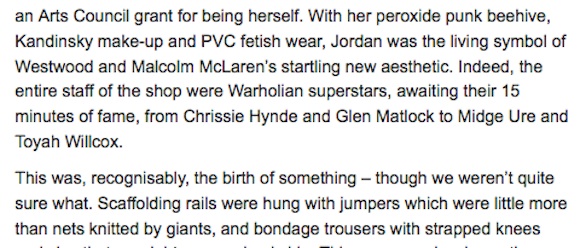
//Errors pile up in Philip Hoare’s review of Vivienne Westwood in the Sunday Telegraph’s Seven Magazine, October 26, 2014//

//Philip Hoare’s name appears first in this section of Ian Kelly’s acknowledgements on p427 of the memoir Vivienne Westwood//
On the basis that phrases such as “fetishistically brilliant” justify a thumbs-up, Hoare’s review arrived in the wake of the media coverage of my claim against the publisher and the authors over substantial plagiarisation of my book The Look in Vivienne Westwood.
Since I have publicly charged the book with major-league sloppiness, this positive review by a relatively well-known literary figure may be framed in the context of a push to restore credibility to the troubled project (as well as the plagiarisation and the huge amount of factual errors, the book is held to contain at least one serious libel and fails to provide proper credit for a number of photographers).
Hoare – who has post-punk associations, having worked in west London record shop Rough Trade and managed the indie group the Pale Fountains – bravely inserts himself into the piece with personal memories of Westwood’s design business with Malcolm McLaren in the 70s and 80s.
According to Hoare – and these are his additions to the blunders already piled high by the 458-page tome – the shop assistants at 430 Kings Road in its incarnation as Sex included not only musician Midge Ure but also actress/performer Toyah Willcox.
Of course neither was employed there. Hoare has simply confused each person’s tangential relationships to the McLaren/Westwood coterie: it is well known that Ure was once approached as a possible singer for the Sex Pistols during their formative stage, while Willcox appeared in Derek Jarman’s 1978 punk movie Jubilee (the subject of a salty attack printed onto a t-shirt by Westwood).
During the period Hoare is discussing, Ure had already hit the number one spot with Scottish teen-pop band Slik while Willcox was making her acting bones in Birmingham Old Rep before transferring to the National Theatre. A simple check in one of the reliable published sources – of course I recommend The Look – would have put him right.
Against these howlers, we can generously attribute to memory failings Hoare’s depiction of shop manager Jordan’s “Kandinsky make-up” (it was avowedly based on the work of Mondrian and introduced in 1977 during the later Seditionaries phase) and the “scaffolding rails” in Sex (they were made of curved chrome and expertly-turned wooden gym bar racks courtesy of the trained wheelwright Vic Mead) and instead study Hoare’s ownership of a pair of bondage trousers bought at Nostalgia Of Mud, McLaren and Westwood’s store in St Christopher’s Place in London’s West End.

//Nostalgia Of Mud – opened to promote the clothing in the companion catwalk collection (also known as Buffalo) – did not sell bondage trousers nor any other punk designs//
Bondage trousers were not sold at NoM, which opened in spring 1982. By this time McLaren and Westwood had publicly rejected these and other designs produced at the height of punk six years earlier.
In fact so vehement was their abandonment of the punk-era garments that Westwood licensed all the designs, include the patterns for the bondage trousers, to King’s Road store Boy, which was knocking them out in inferior copies by the hundred by spring 1982.
Hoare – who has prior in giving glowing reviews to Kelly’s previous books – compounds the mistakes in his review by quoting one of the plagiarised passages from my book: “Sex,” Westwood tells Kelly,”translated into fashion becomes fetish…the very embodiment of youth’s assumption to mortality.”
As pointed out here last week, and as my lawyers have communicated to Westwood, Kelly and Picador, this is one of 40 passages in Vivienne Westwood which bear close resemblance to text in my book, in this case from the introduction written by McLaren nearly a decade-and-a-half ago: “Sex translated into fashion becomes fetish, and fetishism is the very embodiment of youth. Youth has to behave irreverently – it has to take drugs because of its fundamental belief in its own immortality.”
Read Hoare’s review here.
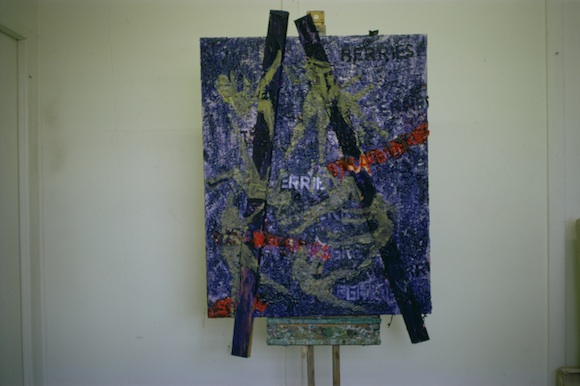
//Berries – 8 Yellowy Green Female Forms, Malcolm McLaren, 1969. Mixed media,
5 x 4’. Photo (c) Barry Martin/Malcolm McLaren Estate//
“I started out in art school as a painter. I studied there for eight years and most of my education was based around the visual arts. I learnt all my politics and understanding of the world through the history of art.”
Malcolm McLaren speaking on British arts documentary series the South Bank Show, 1983
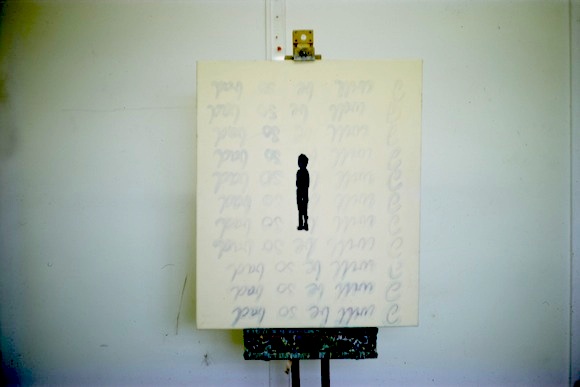
//I Will Be So Bad, Malcolm McLaren, 1969. Oil on canvas, 15 x 12”. Photo (c) Barry Martin/Malcolm McLaren Estate//
Among the exhibits at Let It Rock, the Malcolm McLaren room at this autumn’s group exhibition Art In Pop at Magasin in Grenoble, are never-previously exhibited photographs of the late cultural iconoclast’s paintings taken by his teacher Barry Martin during McLaren’s student days in the 60s.
These are discussed in this extract from the exhibition introduction:
In the summer of 1969, at the end of his first year of the fine art course at London’s Goldsmith’s School Of Art, the 23-year-old student Malcolm Edwards showed 10 or so gestural paintings, mainly oils on canvas with some integrating text statements and others used as the basis for mixed media experimentation incorporating chicken wire, hammered wood planks and, in one case, an inverted paper envelope against depictions of leaf forms.
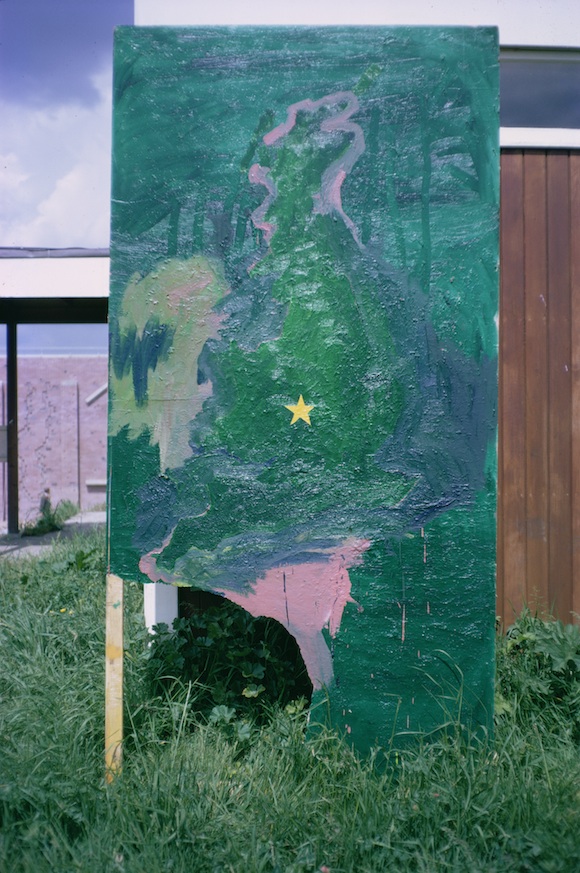
//Map Of British Isles With Yellow Star And Hole, Malcolm McLaren, 1969.
Oil on canvas, 7 x 4’. Photo (c) Barry Martin/Malcolm McLaren Estate//
During a 90-minute critical review by his teacher Barry Martin, Edwards (soon to revert to his birth-name of McLaren) declared his rejection of the limitations imposed by traditional art forms, in particular painting.
McLaren subsequently destroyed all but one of the works. In a symbolic statement the exception, the largest canvas – the 7ft tall Map Of British Isles With Yellow Star And Hole, into which he had already kicked a sizeable hole – was left to rot in the summer rain in the yard at the back of the college. Eventually it was torn apart and taken away by the dustbin-men.
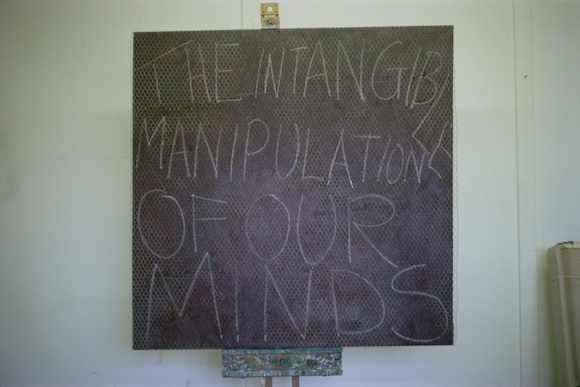
//The Intangible Manipulation Of Minds, Malcolm McLaren, 1969. Mixed media, 4’6″ x 4’6”. Photo (c) Barry Martin/Malcolm McLaren Estate//
McLaren dedicated his remaining two years at Goldsmith’s to organization of events and film-making, one about his hero, the early British rock’n’roller Billy Fury merged into an unfinished commentary on consumerism centred on the history of London’s main commercial thoroughfare, Oxford Street.
In doing so McLaren was inserting himself into the lineage back to Duchamp which included such figures as the Dutch Situationist Asgar Jorn, who had proclaimed “Painting is dead” in 1958, and in particular Andy Warhol, who explained his sponsorship of The Velvet Underground in 1967 by saying: “Since I don’t really believe in painting anymore we have a chance to combine music and art.”
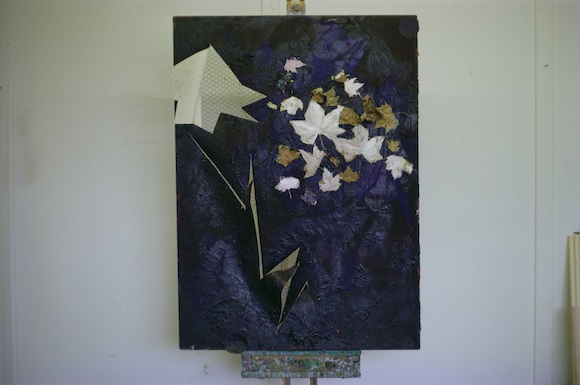
//Leaves, Nature And Cuts, Malcolm McLaren, 1969. Mixed media, 4 x 3’. Photo (c) Barry Martin/Malcolm McLaren Estate//
McLaren later described his decision to open the boutique Let It Rock in London’s King’s Road on exiting the art school system in 1971 as “jumping into the musical end of painting”; here McLaren blazed the trail dictated by his formidable art education by creating new artworks as fashion pieces out of the juxtaposition of found objects.
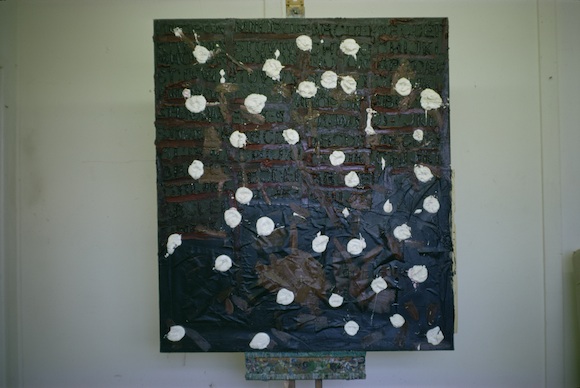
//Words Trapped In Brick Compartments With Prostrate Figures, Malcolm McLaren 1969. Oil on canvas, 5 x 4’. Photo (c) Barry Martin/Malcolm McLaren Estate//
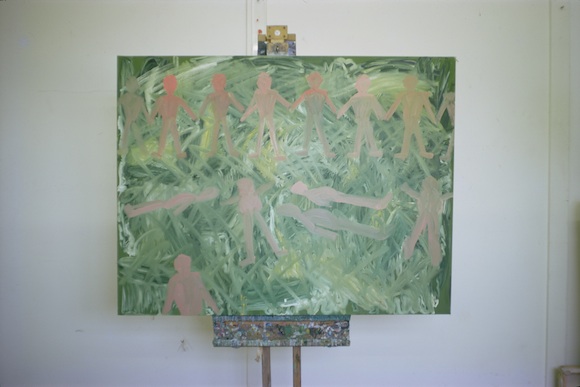
//14 Pink Figures On Moving Sea Of Green, Malcolm McLaren, 1969. Oil on canvas, 12 x 15”. Photo (c) Barry Martin/Malcolm McLaren Estate//
Thanks to Barry Martin for his insights and assistance in putting together the Malcolm McLaren segment of Art In Pop. Martin continues to practice as an artist and sculptor; this is his website.
Art In Pop, which opens on Saturday, is curated by Magasin’s Yves Aupetitallot with John Armleder, Young Kim of the Malcolm McLaren Estate, John Miller and I. The exhibition runs until January 4, 2015 at Le Magasin, Site Bouchayer-Viallet, 8 Esplanade Andry Farcy, 38028 Grenoble.
Details here.
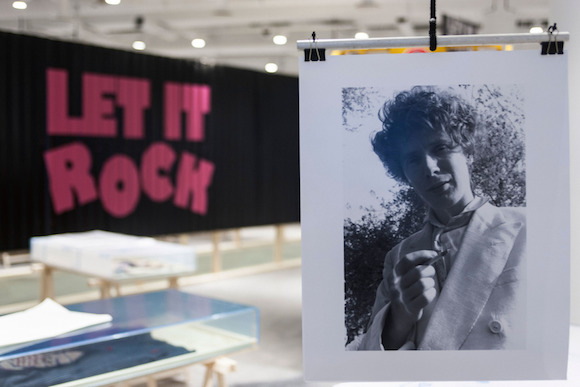
//Foreground: Mobile featuring portrait of Malcolm McLaren in Central Park, NYC, 1975 by Bob Gruen. In the background the 12m-long Let It Rock installation. Photo: Jean Francois Carly (c) Malcolm McLaren Estate//

//McLaren’s Buffalo sheepskin with Witches multi-tongued shoes contributed by designer Kim Jones. Photo: Jean Francois Carly (c) Malcolm McLaren Estate //

//Outfits float in the air, from left: Pirate waistcoat and dress worn by Annabella Lwin of Bow Wow Wow in performance; Let It Rock shawl collared blouse and circle skirt; Nostalgia Of Mud wool toga dress with Folkways print. Malcolm McLaren Estate, Kim Jones Collection, private collection//
The response to this week’s Malcolm McLaren exhibition Let It Rock has been very encouraging; here are some images which hopefully give an idea of the show’s impact.
Running for four days at Copenhagen’s Bella Center as part of the Danish city’s international fashion fair CIFF, the show – curated by me and Young Kim of the MM Estate – focused on the late cultural iconoclast’s engagement with fashion with Vivienne Westwood in the 70s and 80s.
We have received favourable press, with particular praise from the FT’s Charlie Porter, who wrote that the hang of the garments was “exceptional”. Meanwhile style blogger Susie Bubble described the exhibition – full title Let It Rock: The Look Of Music The Sound Of Fashion – as “incredibly detailed and well put together”.
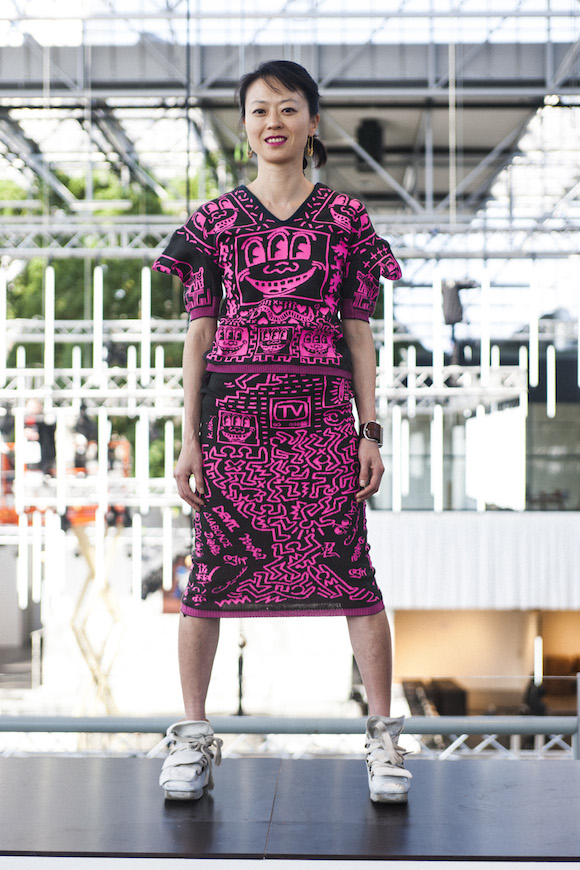
//Young Kim in jacquard Keith Haring print Witches two piece and multi-tongued sneakers. All clothes from Kim Jones coillection. Photo: Jean Francois Carly (c) Malcolm McLaren estate//

//Fans belt buckles with Fans press statement. Sources: Malcolm McLaren Estate and private collection//
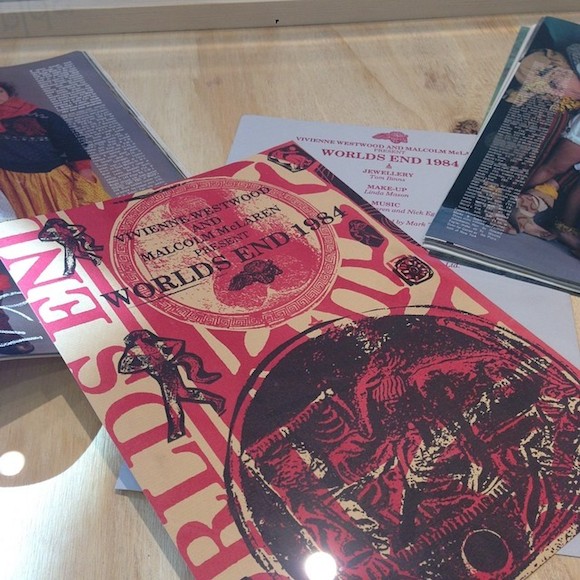
//Press invite and showcard for the sixth catwalk collection designed by McLaren and Vivienne Westwood: Worlds End 1984, later Hypnos. The partnership was dissolved in March 1984. Malcolm McLaren Archive//
We designed the show centrepiece: an imposing black corrugated iron-clad 12-metre long tunnel installation celebrating McLaren’s first shop, Let It Rock. Among the exhibits inside were previously unpublished photographs of the shop interior taken by the late David Parkinson and an original shop price list owned by McLaren. A bespoke soundtrack blared music as featured on the jukebox at 430 King’s Road as well as personal favourites of McLaren’s, from Burundi Black by the Drummers Of Burundi to Cast Iron Arm by Peanuts Wilson and Hallelujah I’m A Bum by Harry “Mac” McLintock.
The show was subdivided into six areas each dedicated to a manifestation of the outlets McLaren operated with Westwood. These were signposted by 60 x 40″ photographic blow-ups of the exteriors we commissioned to be printed on canvas to add dimension and presence.

//Let It Rock exterior with McLaren in foreground, 1972. Photo: Mirrorpix. Printed on canvas 60 x 40″//

//Too Fast To Live Too Young To Die with McLaren and Gerry Goldstein in foreground, 1973. Photo: Malcolm McLaren Estate. Printed on canvas 60 x 40″//

//Sex with shop assistant Jordan in foreground, 1976. Photo: Sheila Rock. Printed on canvas 60 x 40″//

//Worlds End frontage, 1981, photo: Sheila Rock. Printed on canvas 60 x 40″. Left: Marco Pirroni’s Let It Rock drape suit//
With text panels explaining exhibits in McLaren’s own words, each section also featured photographic mobiles suspended from the ceiling and Perspex-topped vitrines containing original garments, photography, notebooks, sketches and ephemera.
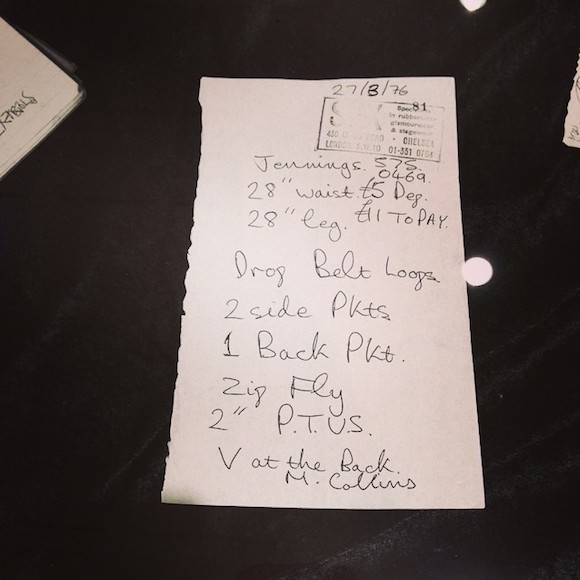
//Customer deposit receipt, Sex, 1976. Signed by shop assistant Michael Collins. Paul Burgess Collection//
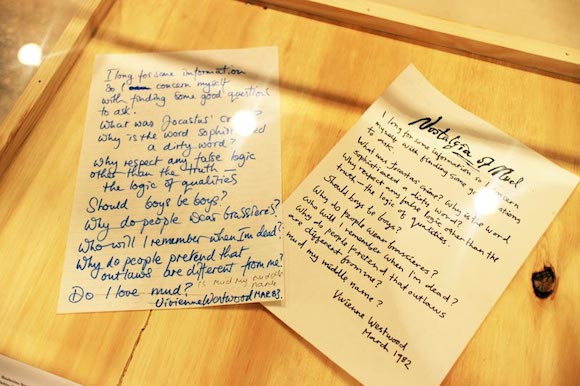
//McLaren’s handwritten Nostalgia Of Mud press release for Vivienne Westwood; her version in her own handwriting. Photo: Jean Francois Carly (c) Malcolm McLaren Estate//
One area of the show was dedicated to 10 outfits reflecting the span of the designs from Let It Rock to Nostalgia Of Mud. Our solution to the ticklish problem of how clothes are presented in exhibitions was to fly these from the ceiling between sheets of Perspex, and we made a selection from the Estate archive as well as contributions by the likes of Louis Vuitton’s style director Kim Jones and guitarist/songwriter Marco Pirroni.

//God Save The Queen Muslin top, Seditionaries, 1977. McLaren’s bondage trousers, Sex, 1976. Malcolm McLaren Estate/private collection//
In the projection room visitors viewed moving images associated with McLaren, from rare film of the catwalk shows he conducted with Westwood in the early 80s to video clips for his hits such as Buffalo Gals and Soweto.

//Marco Pirroni’s print pirate boots, Worlds End, 1981. Top worn by Annabella Lwin of Bow Wow Wow in performance and subsequently dyed. Private collection//

//Savages Navajo print dress with McLaren’s annotated copy of Indian Rawhide. Both private collection//

//Invitation to Witches collection show, Folkways top, Dances Of The World’s People. Malcolm McLaren Estate/private collection//

//Two rubber bracelets deisgned by Tom Binns for Worlds End S/S 1984 with Hobo-Punkature top and Worlds End 1984 invite. Malcolm McLaren Estate/private collection//

//Document confirming the dissolution of the design partnership between McLaren and Westwood, March 1984. It is important to note that McLaren did not relinquish authorship over the works they produced together//

//The final exhibit: Buffalo hat and McLaren’s Chico hat. Kim Jones Collection/Malcolm McLaren Estate.//
Many visitors told us they were bowled over by the show; now we are working on another McLaren exhibition as part of Art In Pop at Le Magasin in Grenoble, France, this autumn. This will encompass McLaren’s creative output from his art-school days through his careers in fashion, music and film to his final works as a visual artist. I’ll keep you informed; it runs from October to January next year.
Follow these links for media coverage of Let It Rock:
Charlie Porter – At the Malcolm McLaren show in Copenhagen, the hang of the garments is exceptional
W Magazine – Celebrating the fashionable life of the late punk pioneer
Style Bubble – Let It Rock: The Look Of Music The Sound Of Fashion
GQ – Four ways Malcolm McLaren revolutionised the style scene
The Cut – The Man Who’s Partly Responsible For The Pharrell Hat
Thanks go to CIFF fashion/design director Kristian Andersen and creative directors Pierre Tzenkoff + Arnaud Vanraet for their foresight in commissioning this show, and also to the exhibition architect, the talented Jean-Christophe Aumas and his excellent team of builders, particularly Annette, Henning + Stefan.

//Front cover, Dances Of The World’s Peoples, Vol 3, Folkways Records, 1958. Design: W. Johnson, printed on paper glued to cardboard sleeve.//

//Invitation card to Paris show of McLaren and Westwood’s Nostalgia Of Mud collection, March 1982. Design: Nick Egan. Courtesy Malcolm McLaren Estate//
The idea is to show in clothes and music that, in the post-industrial age, the roots of our culture lie in primitive societies.
Malcolm McLaren on Nostalgia Of Mud and Duck Rock, 1983
Thanks to Hiroshi Fujiwara for tipping the wink over one of the sources of visual inspiration fed by Malcolm McLaren into the concepts unified by his solo album Duck Rock, the central London clothing store Nostalgia Of Mud and the fashion collections he designed with Vivienne Westwood in 1982-3.

//Figure recast by McLaren and Westwood with Keith Haring adornments on cotton top from Witches collection, 1983. From private collection//
One of the cues for Duck Rock’s investigations into music from all over the world was the series of recordings by enthnological music archivists Ronnie and Stu Lipner released on Folkways Records in the late 50s under the banner Dances Of The World’s Peoples. And McLaren’s appropriation of the naive cover art by W. Johnson – in particular the striking witchdoctor figure – found new form in design collaborations with Westwood, graphics supremo Nick Egan and artist Keith Haring.
McLaren’s brilliance at fusing disparate elements into culture-defining and dazzling artworks is being celebrated next week with the exhibition Let It Rock: The Look Of Music The Sound Of Fashion at the Crystal Hall in Copenhagen’s Bella Center.
The show – which runs from August 3-6 during Copenhagen Fashion Week – will incorporate hundreds of exhibits, many rare and never previously shown to the public, including clothing and objects featured here such as the Witches top, the show cards and original copies of the Dances Of The World’s Peoples LP and catalogue.
Read more here.
Recent Comments